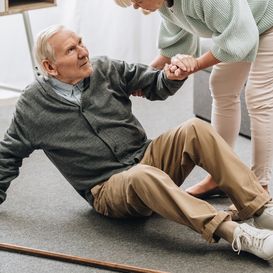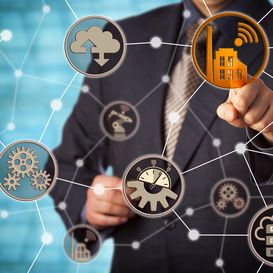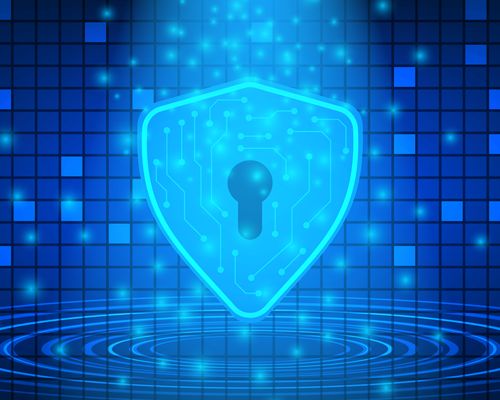
ITEA Call 2022 projects
Unveiling strong international projects with a focus on AI
ITEA Call 2022, the second ITEA 4 Call, has generated very interesting and high-quality proposals. 20 of them were labelled by the ITEA Board in March 2023, representing an effort of more than 2,740 person-years and involving partners from 23 countries. As usual, we see a good balance between SMEs that have the agility to innovate (representing almost half of the effort), large industries that can quickly bring the outcomes of the projects to the market and research centres that provide beyond State-of-the-Art research. It is worth noting the international reach of this Call. New European countries now support ITEA’s Call, including the United Kingdom – involved in five projects – and Switzerland. We also see the participation of companies from the United States and Australia, which are interested in being part of the ITEA research programme even if they will most probably be self-funded. The main countries for this Call remain Belgium, Canada, Germany, Finland, Portugal, South Korea, Spain, Sweden, the Netherlands and Türkiye. Beyond their international dimension, the projects have well-defined objectives, high market ambitions and relevant consortia for the technical challenges and the exploitation phase.
Regarding the topics of the projects, Safety and Security is the most represented ITEA smart challenge with five projects. These projects explore different facets of this challenge, covering physical infrastructure security, fire safety, disaster prevention, connected infrastructure security and protection against cyber security fraud. Smart health is also a well-represented ITEA challenge with four projects. Three of them were discussed during last year's ITEA customer workshop dedicated to Smart health. Smart engineering is again a strong topic with four projects that aim to complete the ongoing effort of ITEA to help the design and operation of complex systems. There are three projects related to smart industry that address different industrial sectors from manufacturing to agriculture. The less represented challenges are Smart energy (two projects), Smart mobility and Smart communities (each with one project). No proposal has been submitted for the Smart cities challenge and we hope that this year’s customer workshop focusing on this challenge will create new momentum.
The technology focus of the projects continues to be Artificial Intelligence (AI). Different areas of AI will be researched, such as the development of digital twins, the use of domain knowledge represented with ontologies, the exploitation of natural language recognition and the ability to explain AI system outputs. As is often the case, most of the projects have defined use cases that will help to focus the research and to prepare fast exploitation.
In summary, the ITEA 2022 Call is composed of very strong, international and AI-driven projects. We wish all of them good luck for the national applications and hope to see them kick off soon.



ARTWORK
SmART and connected WORKer
Project leader
Volvo
(Sweden)
ARTWORK is developing a real-time assistance system for workers in plants who still work with their hands to build customised products like trucks and machines. The solution will comprise Digital Twins of factory workers and equipment, smart instruction generation, and a worker feedback system. The goal is to connect workers to the production line and enable automatic derivation of process instructions based on the context, allowing workers to build customised products more efficiently. The use of and contribution to standards will furthermore allow widespread deployment of the technologies and tools.


BE Faster
Building Energy Flexibility at Scale for Trading and Earning of Revenues
Project leader
Consortio Limited
(United Kingdom)
BE Faster brings countries closer to Net Zero by creating a scalable flexibility trading platform enabling a smarter use of data and controls to reduce energy wastage and support grid supply-demand balancing. The solution defines the Net-Zero pathway for organisations by looking at carbon grid intensity as a signal for trading. BE Faster provides novel algorithms for trading based on several parameters identified using digital twins. The ecosystem will be accessible using open-source code and templates and standards developed will be used to roll out the solution to partner countries.





CAPE
Cognitively Smart Assistant in Phygital Environment
Project leader
inosens
(Türkiye)
The retail sector plays a crucial role in a country's economy, but needs to undergo a transformation in order to be able to provide a seamless shopping experience, combining online and offline activities, that includes personal recommendations and the continuation of purchases initiated in one channel to the other. CAPE addresses these challenges by using various technologies such as AI, deep learning, blockchain, and IoT to develop personal experiences, improve the performance of robots/kiosks, and offer alternative opportunities and technologies not widely available in today’s market. The targeted impact includes improved customer and employee satisfaction, increased sales, and more efficient store operations.


FERIDE
FERtigation Irrigation DEcision Support System
Project leader
ARD GROUP
(Türkiye)
The increasing food demand and decreasing water resources have created an urge to find new technologies for efficient use of water and fertiliser for agriculture. FERIDE aims to provide a technologically controlled farming environment to improve the availability and absorption of water and nutrients in the soil, resulting in a substantial increase in crop production and quality while decreasing farming costs. They will develop a European-scale network of actors to better manage logistics and implement an information system platform, allowing communication between different system actors such as farmers, fertilizer suppliers and irrigation providers.





FireBIM
Accounting for fire safety engineering using Building Information Modelling
Project leader
Technical University of Denmark
(Denmark)
European national building regulations on fire safety are different from country to country, making international collaboration demanding, costly, and risk prone. FireBIM aims to harmonise and implement the fire codes of its participating countries in an open-source, web-based BIM platform for fire safety assessment that facilitates (inter)national fire safety documentation and compliance from the early design stages. This will enable collective interpretation of fire regulations and automated compliance checking of buildings against fire safety regulations. As a result, design teams will be digitally assisted to create safer and better buildings cost-effectively.






I2DT
Intelligent Interoperable Digital Twins
Project leader
RISE - Research institutes of Sweden
(Sweden)
The I2DT project aims to create an interoperability framework, methodology and tool support for constructing digital twins that can reflect complex systems with large-scale heterogeneous data and interactions. The project will address core technologies and application domains of interoperable digital twins and apply them to relevant areas like industrial production, smart cities, infrastructure asset management, wildfire protection and renewable energy resources. The project will also advance model-based development, integrate machine learning components, define a unified reference architecture and provide tool support for both engineering and operating digital twins.



MAST
Managing Sustainability Tradeoffs
Project leader
University of Groningen
(The Netherlands)
Software-intensive systems are required to be more and more sustainable, regarding both the ease of making changes to the code, as well as their power consumption and associated carbon emissions. Regrettably, these aspects often conflict with each other. By developing tools and methods MAST will deal with the complex trade-offs between these two aspects of sustainability aiming to guide development teams into optimising their design decisions according to stakeholder concerns and system/environment constraints. Organisations will benefit from the MAST results by reducing carbon footprint and technical debt, complying with sustainability regulations, being more competitive by increasing product quality and creating new business models.





MediSpeech
Improved efficiency in automated medical reporting to enhance doctor and patient experience
Project leader
MEDrecord BV
(The Netherlands)
Nowadays, administrative tasks can consume up to 30% of clinicians' working hours, diverting attention from patient care and contributing to physician burnout. The MediSpeech project aims to reduce administrative waste in healthcare by creating an open digital healthcare ecosystem for automated medical reporting. The proposed solution uses AI-powered speech recognition, data interoperability and harmonisation, and technology-advanced clinical decision support to transform the healthcare model into a patient/doctor-centered approach.





NADIR
Natural Disaster Risk and Assessment Platform
Project leader
EarthDaily Analytics
(Canada)
Climate change has a significant impact on our biosphere, and it’s affecting people's life, properties and health, hastening biodiversity loss through wildfires, flash floods and mega-drought events. NADIR aims to build a natural Hazard/Disaster Risk and Assessment Platform to provide advanced risk assessment products and critical intelligence information to support the mitigation and management of natural hazards/disasters using (new) satellite imaging. This type of data together with the known ground truth will allow extracting significantly improved intelligence information enabling better monitoring, management (simulation and operational planning), prediction and in some cases prevention of large-scale impact from natural disaster; reducing damages and saving lives.




OpenSCALING
Open standards for SCALable virtual engineerING and operation
Project leader
Robert Bosch GmbH
(Germany)
The European Climate Law sets the target of reducing net greenhouse gas emissions by at least 55% by 2030 and for Europe to become climate-neutral by 2050. To meet these ambitious goals open standards and established modelling and simulation tools need be enhanced to better support large-scale systems and distributed controllers optimised to minimise energy consumption and greenhouse gas emissions. Several industrial demonstrators will showcase how the OpenSCALING innovations are applied in the energy, building, aviation, and automotive domains through green hydrogen production, more efficient heat pumps, fuel cell propulsion and electrified vehicles.






Optimal-LOADS
Optimal Logistics Operation & Analysis Data Space
Project leader
Materna Information & Communications SE
(Germany)
The recent crises have demonstrated the importance of ensuring the resilience of the supply chain and its logistics processes and reinforced the need of the logistics industry to permanently enhance these processes. Optimal-LOADS plans to optimise and digitise logistics and aims to create trust among data providers and users by developing data spaces in various sectors, ensuring data sovereignty, and enabling interoperability in multi-stakeholder environments. This will contribute to an improved efficiency of the multi-modal logistics supply and transport chains and the valorisation of data in the logistics sector.



PROFIT
PRocedure Optimization and data-driven eFficiency Improvement in healthcare environmenTs.
Project leader
Barco N.V.
(Belgium)
The healthcare sector is facing acute staff shortages, and the prevalence of chronic diseases will only continue to increase. The PROFIT consortium plans to streamline healthcare tasks and enhance patient outcomes with novel solutions that optimise workflow in hospitals and home care. The key targeted technical innovations are: a context-aware communication tool for nurses to handle alerts and tasks, AI-based software for assistance and automation in clinical procedures, a compute platform including a medical grade QA layer for the deployment of AI-enabled solutions in the healthcare sector, real-time tracking systems based on sensors and video data, digital home care and the integration of healthcare and social services in a holistic and person-centric approach. Clinical experts will ensure user needs are met and use cases will validate the benefits of the proposed solutions when integrated into the clinical practice.




SINTRA
Security of Critical Infrastructure by Multi-Modal Dynamic Sensing and AI
Project leader
TAV Technologies
(Türkiye)
Stakeholders of critical industrial and civil infrastructure, e.g., airports, power plants and road networks, frequently suffer from the disruptions caused by an overwhelming diversity of man-made physical safety and security threats ranging from well-organised crime activities to low-level but costly actions like vandalism. SINTRA aims to improve the resilience and protection of these critical infrastructures by developing an open data-streaming AI platform that enables interoperability, information sharing, and privacy protection. Using multi-modal sensing and AI-powered data analysis, it will provide a comprehensive view of the infrastructure’s safety and security and detect complex anomalies.



SOSIS
Software product line Optimization for Safety-/mission-critical Industrial Systems
Project leader
ERSTE Software Limited
(Türkiye)
Major challenges for all companies working with Software Product Lines (SPL) are to handle the variability aspects of the SPL over their complete life cycle, especially in safety-critical and mission-critical systems. The objective of SOSIS is to develop methods and solutions to improve the management of variability and reduce certification efforts. SOSIS’s approach is holistic, by looking into methods and techniques related to model-based development for the requirement engineering, variant development, and variant management while investigating model-based and AI/ML-based techniques for variant testing and deployment phases and providing a platform for experimentation and knowledge transfer for the European industry.





Sa4CPS
Secure situational awareness for critical cyber-physical systems
Project leader
VTT Technical Research Centre of Finland Ltd.
(Finland)
Sa4CPS aims to develop a secure situation awareness concept for critical cyber-physical systems in the logistics, mobility, energy and security sectors, particularly in ports. The targeted innovation will arise from the application of novel solutions for situational awareness with a digital zero-trust approach with distributed ledger technologies (DLT). The aim is to enable situation-aware IoT, operating in a smart way with AI, and DLT for enabling shared digital trust for multiple stakeholders. The Sa4CPS concept is expected to improve the resiliency, security, privacy and safety of people, autonomous physical objects and company digital twins during unexpected events such as accidents and physical or virtual attacks.




SmartEM
Open reference architecture for engineering model spaces
Project leader
Philips Consumer Lifestyle BV
(The Netherlands)
SmartEM aims to address the limitations of current engineering models by developing a reference architecture for engineering model spaces. The architecture will enable the reuse, exchange and integration of computational engineering models, reducing the need for costly design corrections and promoting early data and model exchanges. SmartEM will use AI-assisted methods to create surrogate models from heterogeneous data sources and allow their re-combination within a given engineering domain. The project will develop use-case model spaces to manage reusable and transferable engineering models for various domains and provide solutions for IP management to enable model exploitation in an increasingly digital engineering market.






TREAT
Transforming Healthcare Through Semantic Interoperability & Patient Self-Efficacy
Project leader
My Viva Inc.
(Canada)
TREAT aims to increase patient self-efficacy in managing non-communicable diseases including diabetes, heart attacks, cancers and chronic respiratory diseases, by using an asynchronous model and integrating data from wearables, journals, and medical records. In such a model, healthcare access moves from the clinic (system-centric) into the patient's daily life and health management shifts from the clinician to the patient. The project will develop novel wearables and software-based solutions, like semantic interoperability, automated care feedback loops with AI recommendations and novel interfaces using interactive augmented reality, to improve patient self-efficacy while driving clinical efficiencies.

Other chapters
Use the arrows to view more chapters

Editorial
By Zeynep Sarılar

25 years of ITEA
Two Public Authorities share their views of the ITEA experience

Country Focus: Sweden
Research and innovation are crucial for competitiveness, sustainability and resilience

ABB
Provider of world-leading sustainable and automated solutions

HeKDisco Project benefits story
AI system and smart wristband helps prevent the elderly from falling

ITEA Success story: PARTNER
‘One patient, one team’ approach for hospitals

SME in the Spotlight: Cape of Good Code
A business value metric for software leaders

Community Talk with Gjalt Loots
A multifaceted connector!

ITEA PO Days 2023 & 25 years anniversary and exhibition
Become part of ITEA's next ground-breaking innovation!

ITEA Smart Cities customer workshop
Insights into the 2023 Smart Cities customer workshop

ITEA Success story: VMAP
Enhancing interoperability in virtual engineering workflows

By and for end-users
Dynaxion aims for a safer society with AI-based Spectroscopy

25 years of ITEA
Ground-breaking innovations we’re still grateful for today

ITEA Call 2022 projects
Unveiling strong international projects with focus on AI


















